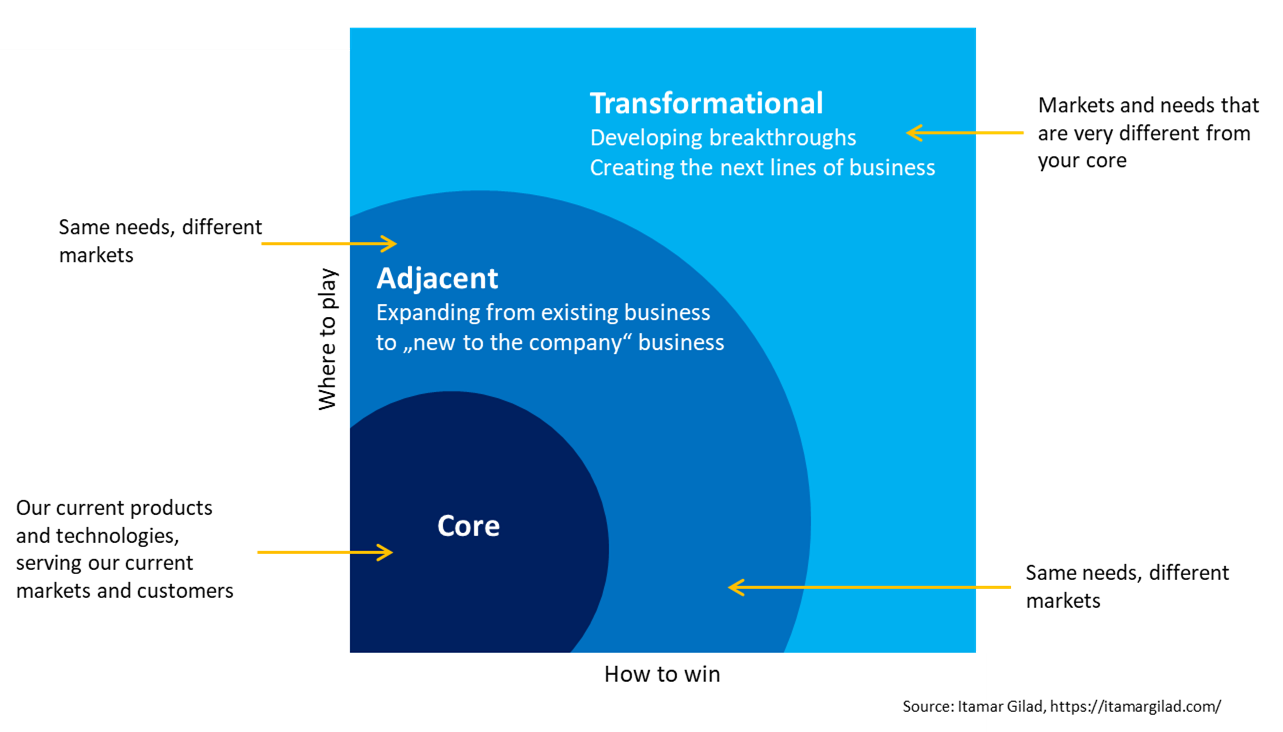Strategic Horizons
Strategic horizons refer to different levels of planning that guide an organization’s efforts. These horizons help align short-term actions with long-term goals and provide a structured approach to managing product portfolios and innovation initiatives.
-
Horizon 1 - Core Business: This horizon focuses on optimizing and enhancing the existing products and services within the current market. Examples include improving user experience, adding new features, and refining the existing value proposition.
-
Horizon 2 - Adjacent Opportunities: Horizon 2 involves exploring opportunities in adjacent markets or customer segments that leverage existing capabilities. For instance, a language learning app expanding from teaching adults to offering language courses for children.
-
Horizon 3 - Transformational Innovations: Horizon 3 is about pursuing disruptive and transformational innovations. This could involve exploring emerging technologies, creating entirely new product lines, or entering entirely new markets.

Importance and Benefits of Strategic Horizons
-
Alignment: Strategic horizons ensure that short-term actions are aligned with long-term strategic goals, preventing drift and maintaining a clear path forward.
-
Risk Management: By balancing efforts across different horizons, organizations can manage risk more effectively. While Horizon 1 provides stability, Horizon 3 promotes innovation and adaptability.
-
Innovation: Strategic horizons encourage a balanced innovation portfolio. Organizations can simultaneously improve existing products, explore adjacent opportunities, and pursue disruptive innovations.
-
Resource Allocation: Horizons help allocate resources effectively. While Horizon 1 demands ongoing support, Horizon 2 and 3 require varying levels of investment and risk tolerance.
-
Sustainability: The structured approach of strategic horizons supports long-term sustainability by fostering a culture of continuous improvement and innovation.
Rational for Using Strategic Horizons
Strategic horizons provide a framework that addresses both short-term tactical needs and long-term strategic vision. Differentiating product initiatives across these horizons enables organizations to diversify their efforts, manage risk, and drive innovation. Horizon 1 ensures the core business remains competitive, Horizon 2 allows for expansion, and Horizon 3 encourages groundbreaking innovations. Employing strategic horizons ensures a balanced approach that supports growth, adaptability, and sustained success.